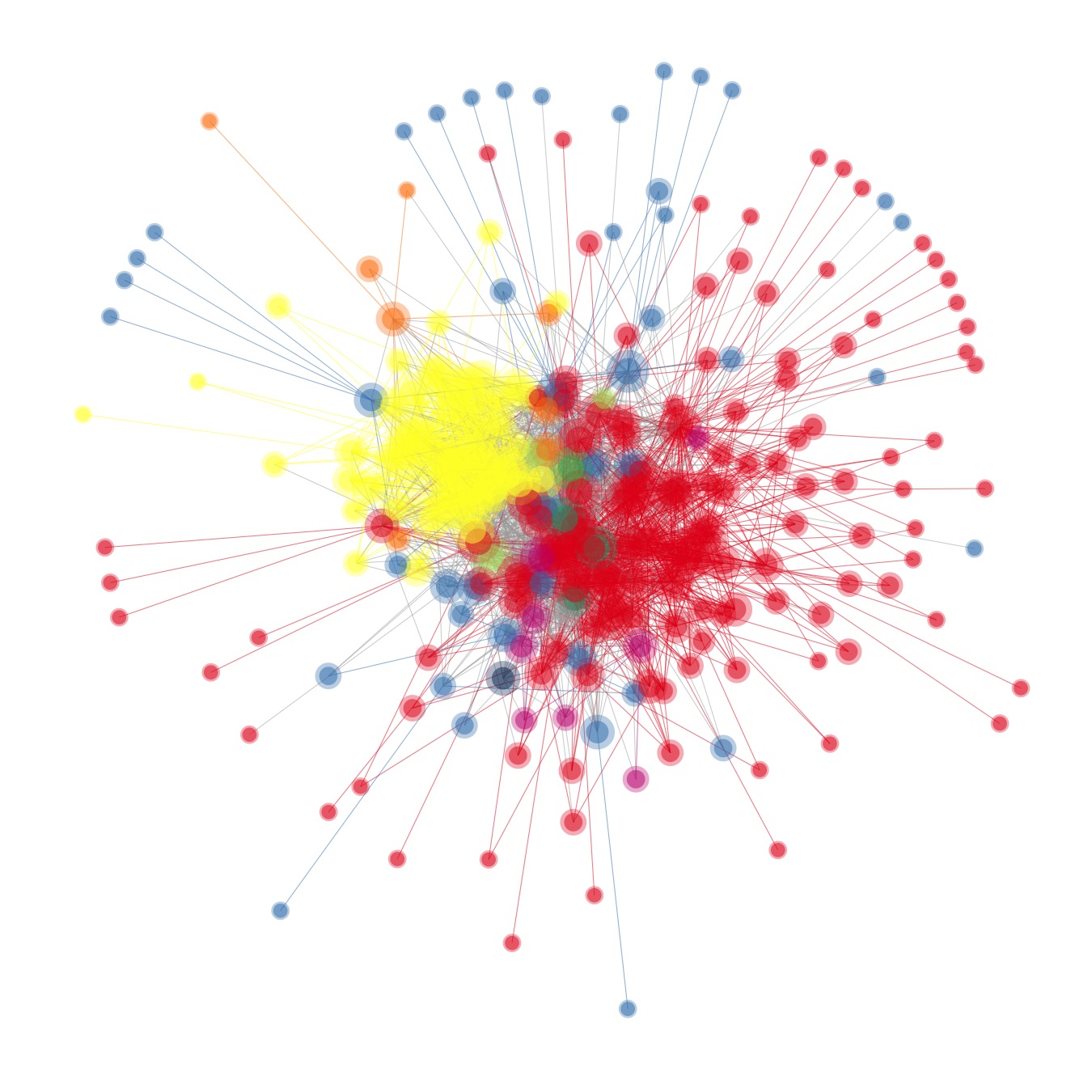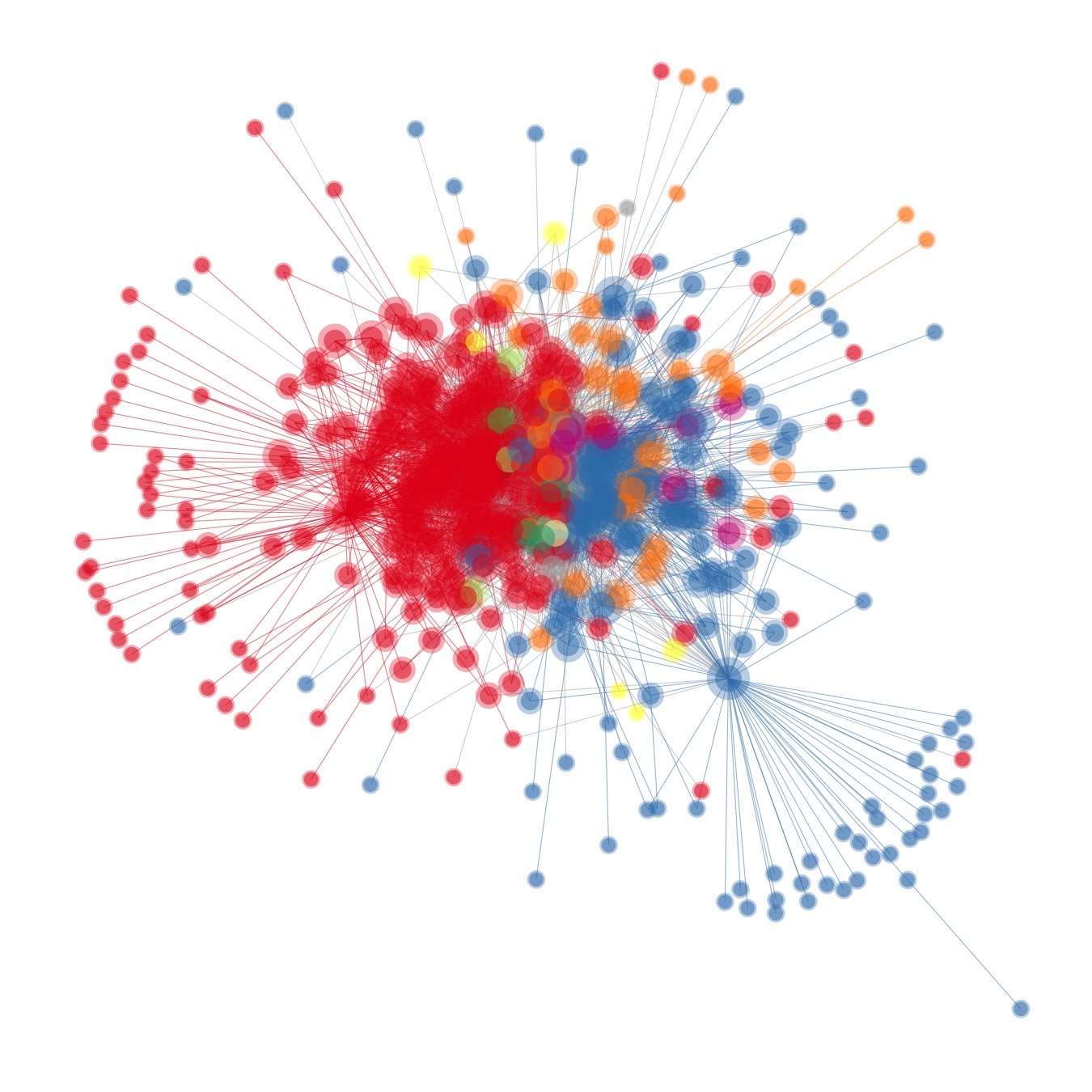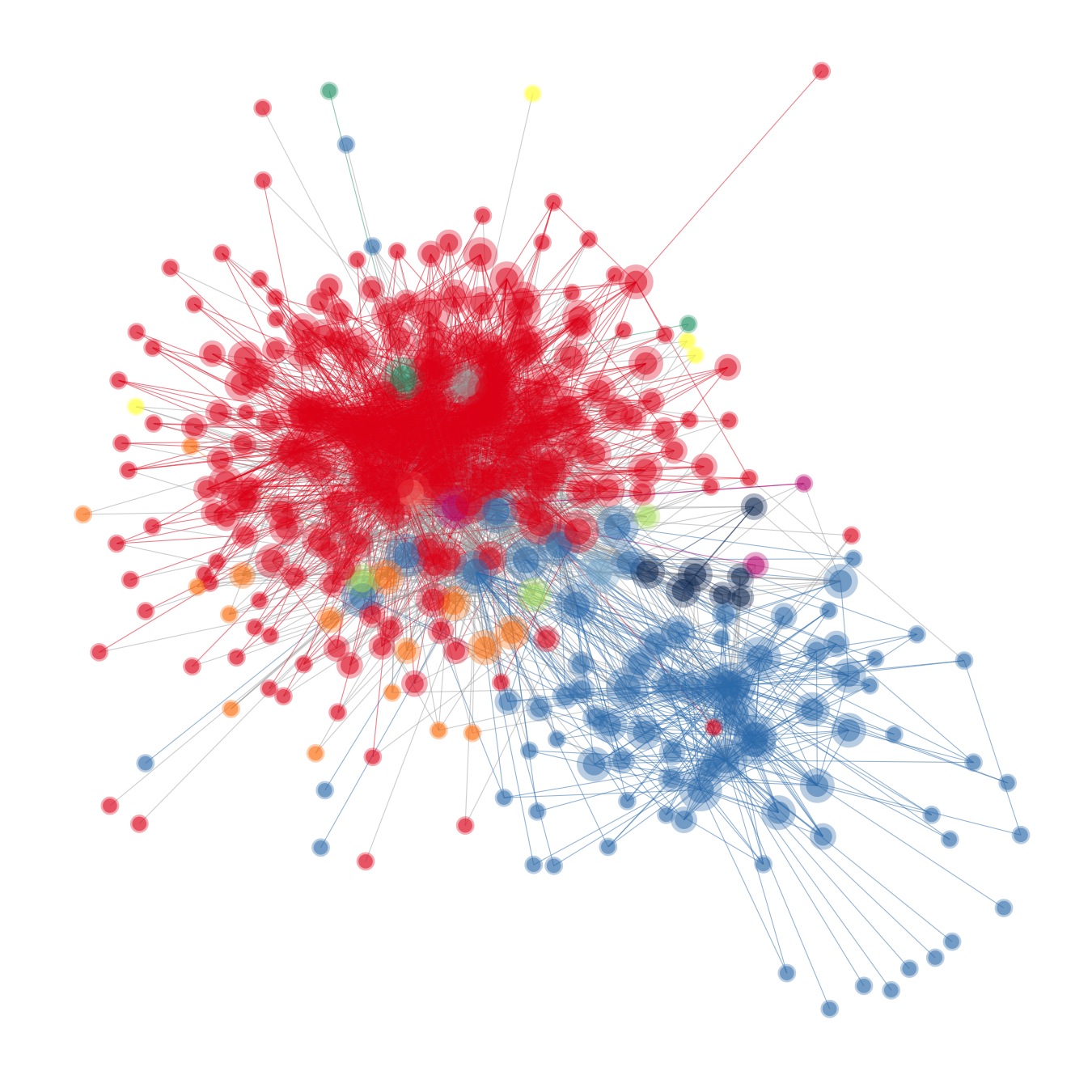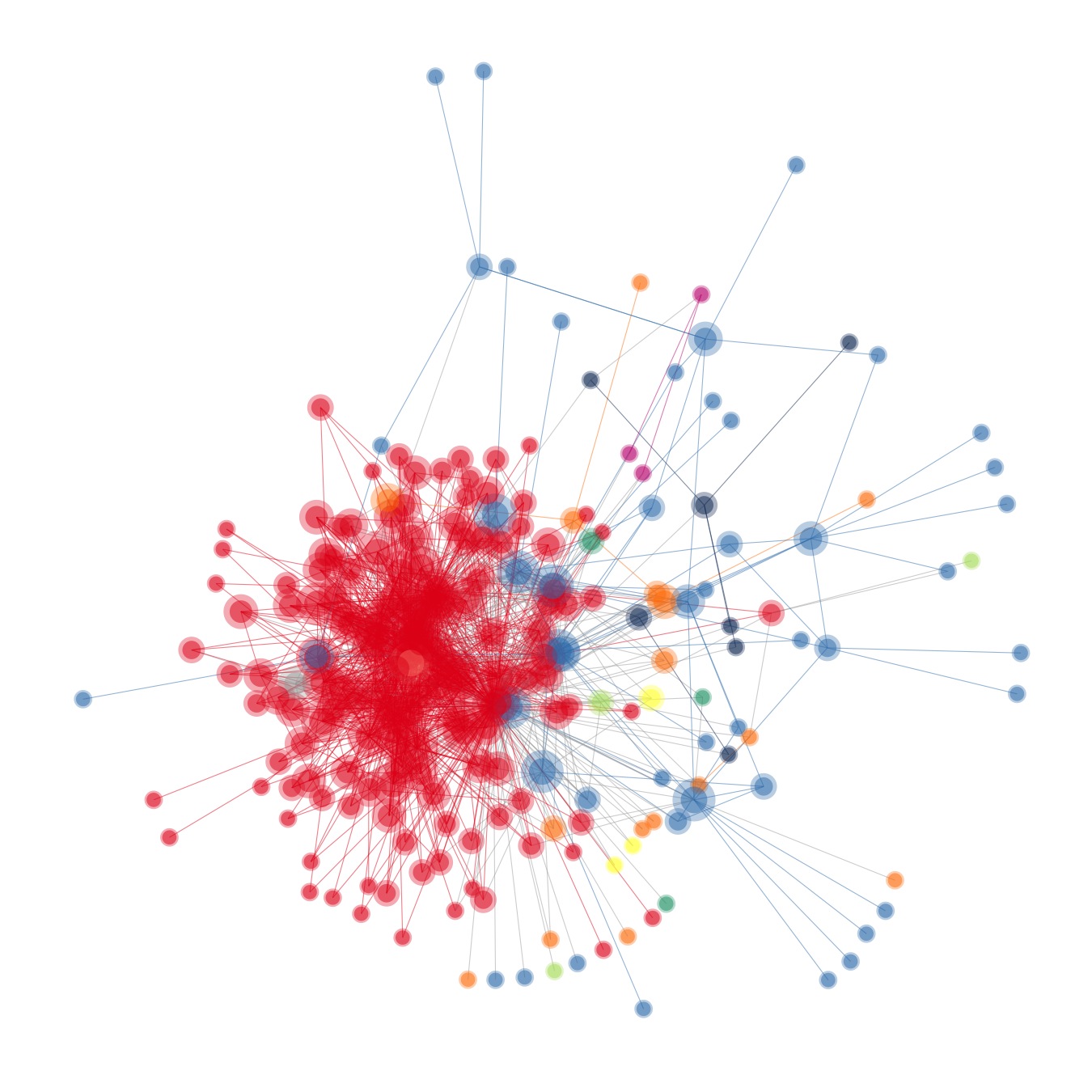 2010—2015
2010—2015 2005—2010
2005—2010 2001—2005
2001—2005 1997—2001
1997—2001 1992—1997
1992—1997 1989—1992 (missing 1987–1988)
1989—1992 (missing 1987–1988)
The data cover years 1989—2015 and are split by general elections. Amendments to the motions are not included.
All networks are directed graphs drawn with the Fruchterman-Reingold force-directed algorithm. The ties connect the primary sponsor of one or more early day motion(s) to his or her systematic cosponsors (read below). The nodes are sized by unweighted total degree. When two nodes belong to the same group, any existing tie between them is given the color of that group. There is a guide to party codes and colors at the end of this page.
The graphs are subset to systematic cosponsorship ties by using the weighted propensity to cosponsor (WPC) scheme by Gross, Kirkland and Shalizi. The graphs show only ties for which the WPC is equal to 1, which corresponds to the situation where a Member of Parliament has cosponsored all early day motions by another one.
Similar graphs are available for other countries.
2015—
 2010—2015
2010—2015
 2005—2010
2005—2010
 2001—2005
2001—2005
 1997—2001
1997—2001
 1992—1997
1992—1997
 1989—1992 (missing 1987–1988)
1989—1992 (missing 1987–1988)
